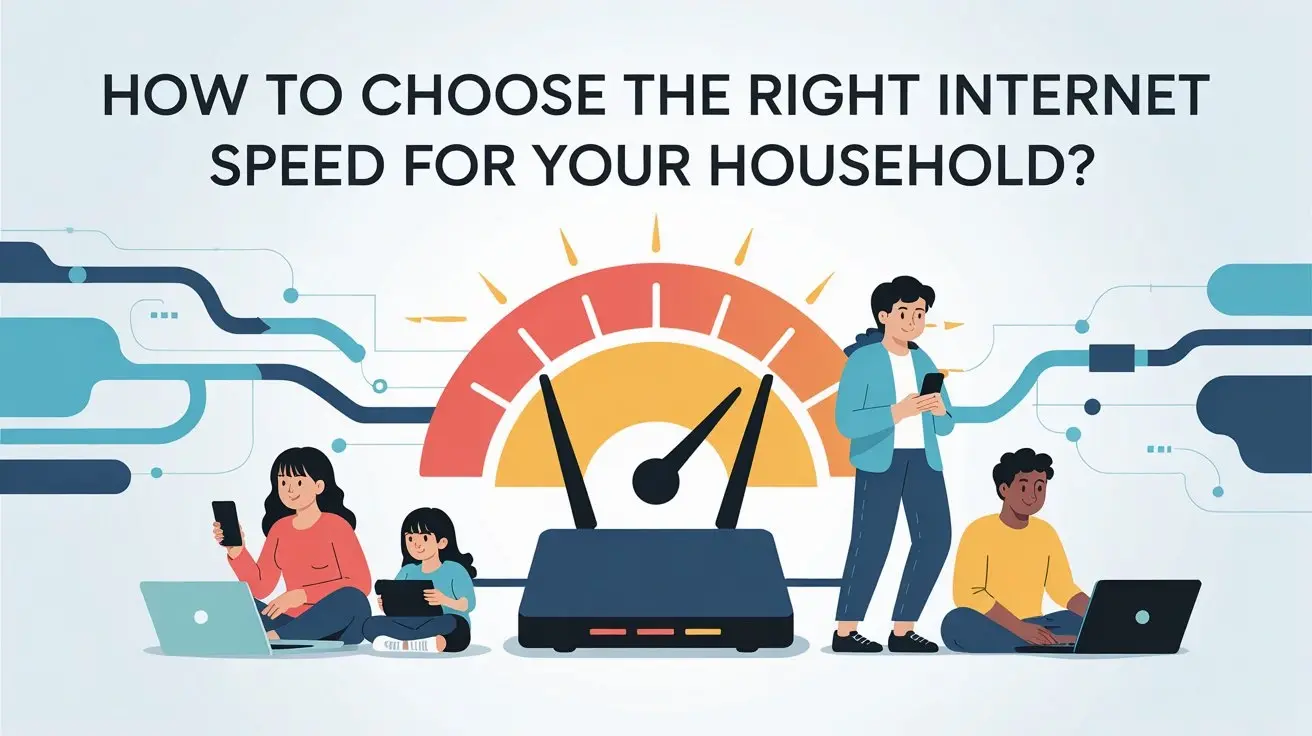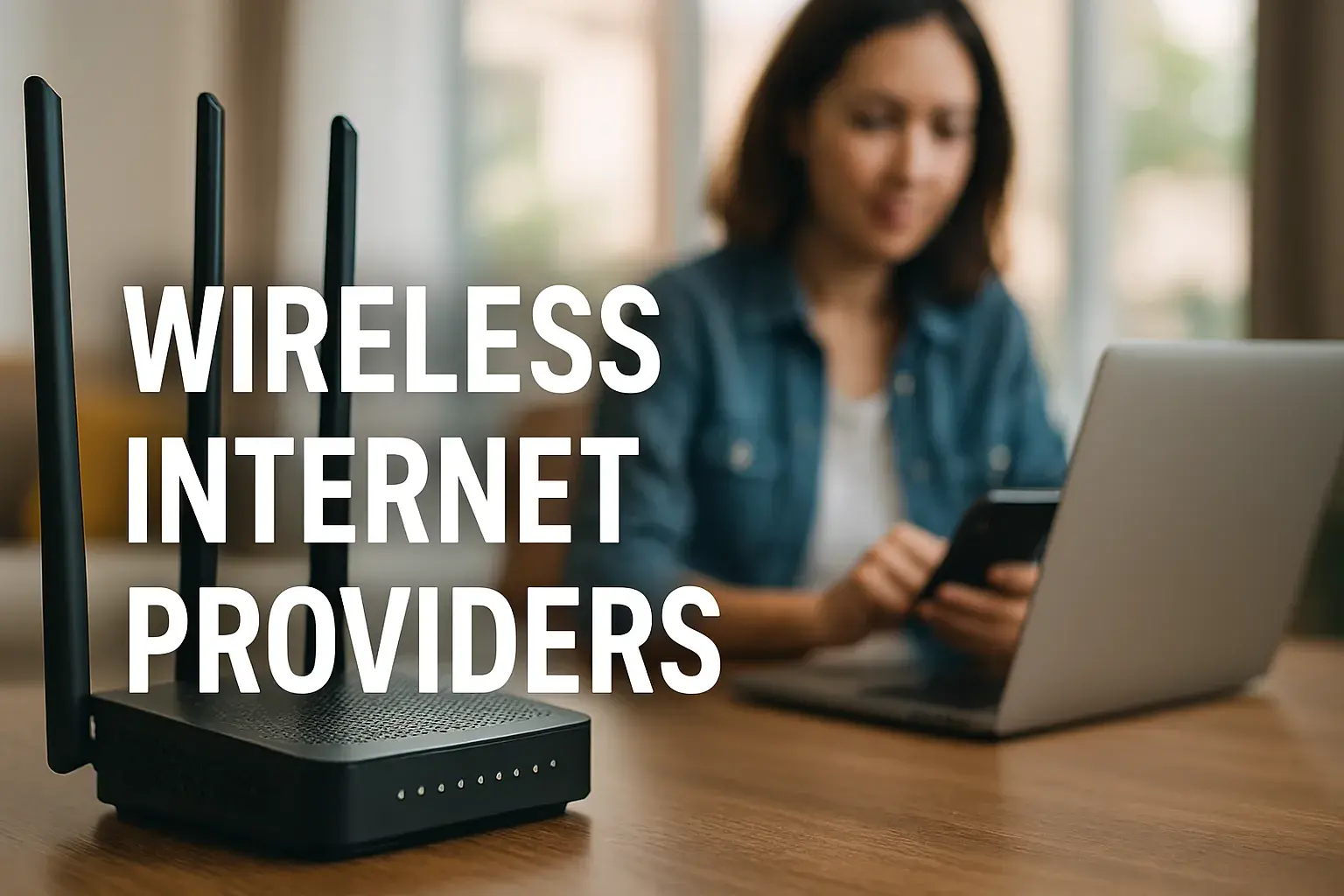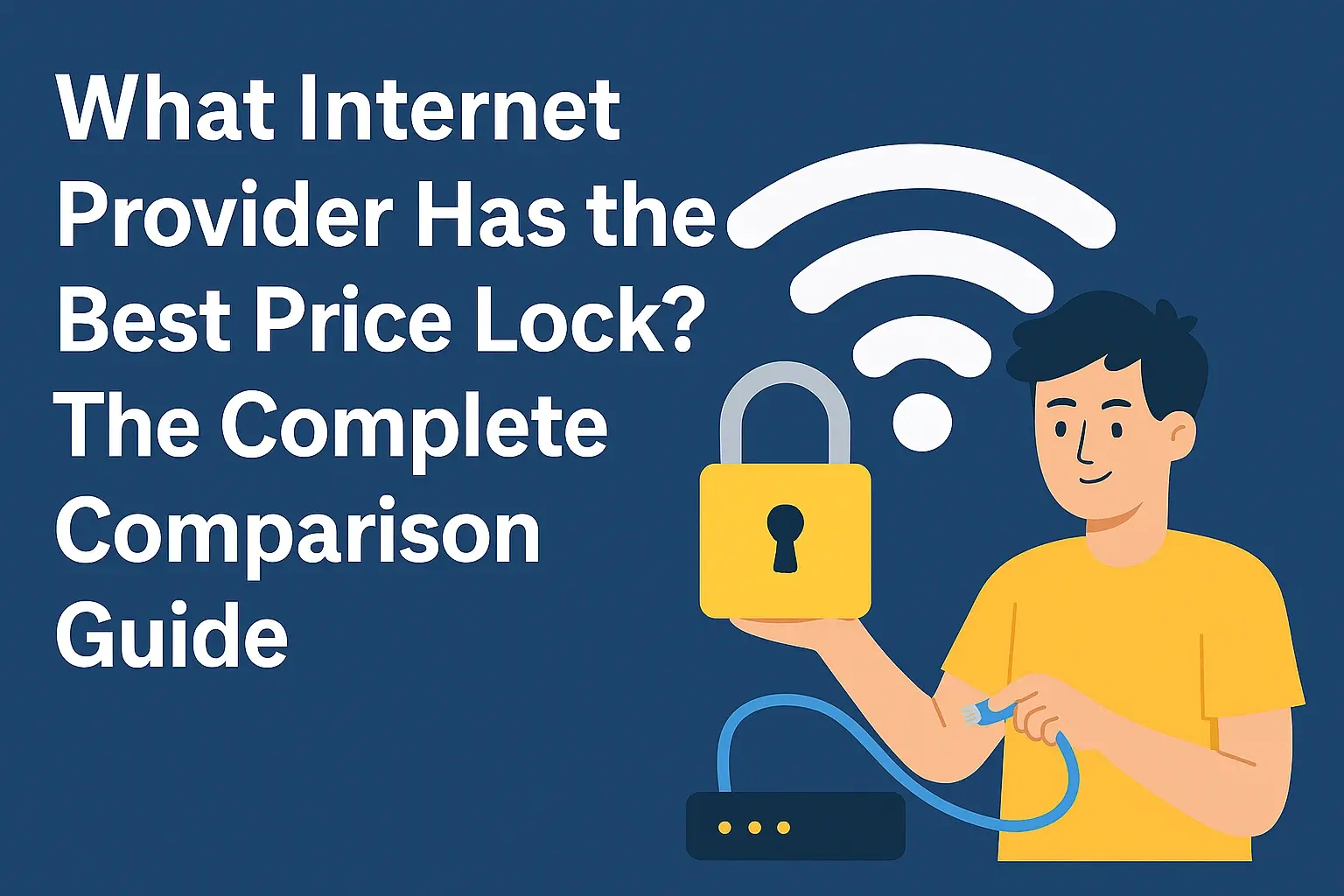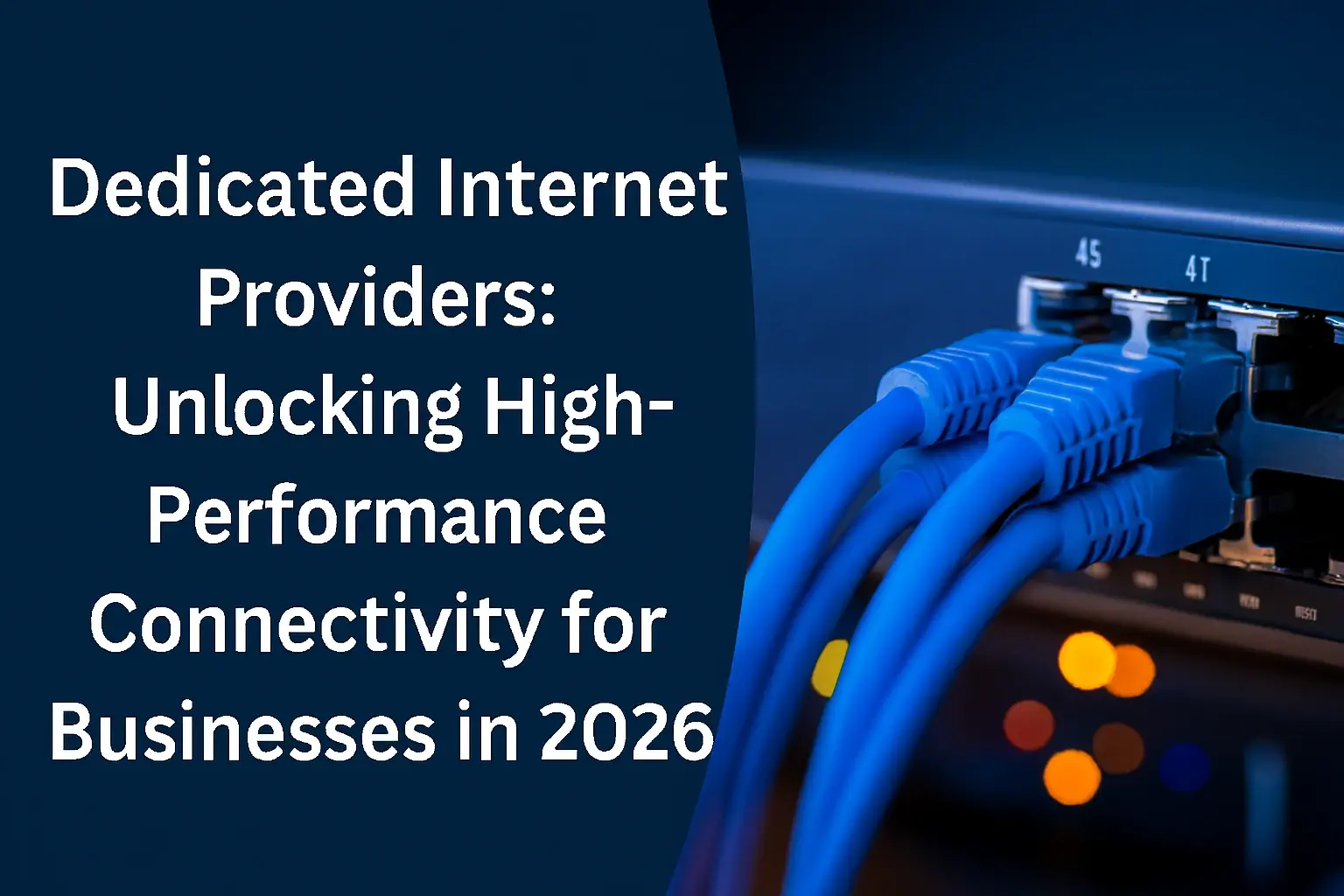
Choosing the right internet speed for your household can feel overwhelming with so many options and technical terms like Mbps, bandwidth, and latency. Whether you're streaming movies, gaming online, working from home, or simply browsing, the right internet speed ensures a smooth and frustration-free experience. This guide will walk you through the factors to consider, typical speed requirements for common activities, and practical tips to select the best internet plan for your household’s needs.
Understanding Internet Speed Basics
Internet speed is measured in Megabits per second (Mbps) for both download and upload speeds. Download speed determines how quickly data is transferred from the internet to your device, such as loading a webpage or streaming a video. Upload speed, on the other hand, affects how fast you can send data, like uploading files or video conferencing.
Another key factor is bandwidth, which refers to the amount of data your connection can handle at once. A household with multiple devices streaming, gaming, or working simultaneously needs higher bandwidth to avoid slowdowns. Latency (measured in milliseconds) impacts how quickly data travels, which is crucial for real-time activities like gaming or video calls.
Factors to Consider When Choosing Internet Speed
To pick the right internet speed, evaluate these key factors:
1. Number of Users
The more people using the internet in your household, the higher the speed and bandwidth you’ll need. A single user streaming in HD might be fine with 25 Mbps, but a family of four with multiple devices may require 100 Mbps or more.
2. Types of Online Activities
Different activities demand different speeds. Here’s a breakdown of common tasks and their speed requirements:
Browsing and Email: 1–5 Mbps per user
HD Streaming (e.g., Netflix, YouTube): 5–10 Mbps per stream
4K Streaming: 25–35 Mbps per stream
Online Gaming: 10–25 Mbps (low latency is critical)
Video Conferencing (e.g., Zoom, Teams): 3–6 Mbps per call
Large File Downloads/Uploads: 50+ Mbps for faster transfers
3. Number of Devices
Count all internet-connected devices in your home, including smartphones, tablets, computers, smart TVs, gaming consoles, and IoT devices like smart speakers or security cameras. Each device consumes bandwidth, so a household with 10+ devices needs a higher-speed plan.
4. Work-from-Home Needs
Remote work often involves video calls, cloud-based applications, and file sharing, which can strain your connection. A stable 25–50 Mbps per user is usually sufficient for seamless productivity.
5. Budget and Availability
Internet plans vary by region and provider. Rural areas may have limited high-speed options, while urban areas offer fiber plans up to 1000 Mbps (1 Gbps). Balance your needs with your budget, as higher speeds often come with higher costs.
Recommended Internet Speeds for Different Households
Here’s a general guide to help you choose based on household size and usage:
Small Households (1–2 People, Light Usage)
Speed: 25–50 Mbps
Best For: Browsing, social media, email, and occasional HD streaming.
Example: A single person streaming Netflix in HD while browsing on their phone.
Medium Households (3–5 People, Moderate Usage)
Speed: 100–200 Mbps
Best For: Multiple users streaming in HD, video calls, light gaming, and smart home devices.
Example: A family with two people streaming, one gaming, and a smart speaker running.
Large Households (5+ People, Heavy Usage)
Speed: 200–500 Mbps
Best For: 4K streaming, competitive gaming, multiple video calls, and numerous connected devices.
Example: A household with multiple 4K streams, online gaming, and remote work simultaneously.
Power Users (High-Demand Households)
Speed: 500–1000 Mbps (1 Gbps)
Best For: Tech-heavy homes with smart devices, 4K/8K streaming, professional-grade remote work, or content creation.
Example: A household with smart home automation, multiple 4K streams, and large file uploads for work.
Additional Considerations for Optimal Performance
Wired vs. Wireless Connections
Wi-Fi is convenient, but it can reduce speeds due to interference or distance from the router. For high-bandwidth activities like gaming or 4K streaming, consider a wired Ethernet connection for better reliability and speed.
Router Quality
A high-speed internet plan is only as good as your router. Ensure your router supports the latest Wi-Fi standards (e.g., Wi-Fi 6) and can handle your plan’s maximum speed. Older routers may bottleneck your connection.
Latency and Ping for Gaming
For gamers, low latency (ping) is as important as speed. Look for plans with low-latency guarantees, especially if you play fast-paced multiplayer games like Fortnite or Call of Duty.
Data Caps
Some providers impose data caps, limiting how much data you can use monthly. Streaming and downloading can quickly eat through caps, so opt for unlimited plans if possible, especially for heavy users.
Future-Proofing
As technology evolves, internet demands increase. Choosing a slightly higher speed than your current needs can future-proof your plan for new devices or services like 8K streaming or VR gaming.
How to Test and Optimize Your Internet Speed
Testing Your Speed
Use free tools like Ookla’s Speedtest.net or Fast.com to measure your current download and upload speeds. Test at different times of the day to account for peak usage periods when speeds may dip.
Troubleshooting Slowdowns
If your speeds are lower than expected:
Restart your modem and router.
Check for background apps or devices hogging bandwidth.
Move your router to a central location or upgrade to a mesh Wi-Fi system for better coverage.
Contact your provider if issues persist, as there may be network congestion or technical problems.
Upgrading Your Plan
If your current plan can’t keep up with demand, contact your provider to explore faster options. Compare plans from multiple providers in your area to find the best value.
Common Myths About Internet Speed
Myth 1: Higher Speeds Always Mean Better Performance
Speeds above 100 Mbps won’t noticeably improve basic tasks like browsing or HD streaming. Only upgrade if your household has high-bandwidth needs.
Myth 2: You Need the Fastest Plan Available
A 1 Gbps plan is overkill for most households. Assess your actual needs to avoid paying for unused speed.
Myth 3: Wi-Fi Speed Equals Plan Speed
Wi-Fi speeds are often lower than your plan’s advertised speed due to interference, distance, or router limitations. Test with a wired connection to confirm your plan’s performance.
Choosing the Right Provider
When selecting an internet service provider (ISP), consider:
Availability: Check which providers offer service in your area using tools like BroadbandNow or your zip code on provider websites.
Reliability: Read reviews or ask neighbors about service consistency.
Customer Support: Look for providers with responsive support for troubleshooting.
Bundling Options: Some ISPs offer discounts when bundling internet with TV or phone services.
Conclusion
Choosing the right internet speed for your household doesn’t have to be complicated. By assessing the number of users, devices, and activities in your home, you can select a plan that meets your needs without overspending. Start with a speed test to understand your current performance, then use this guide to match your household’s usage to the appropriate plan. Whether you’re a casual user or a tech-savvy household, the right internet speed ensures everyone stays connected, productive, and entertained.
For more personalized advice, contact your ISP or use online tools to compare plans in your area. A well-chosen internet plan can make all the difference in your online experience.
Call (855) 210-8090 to get an internet provider now!






